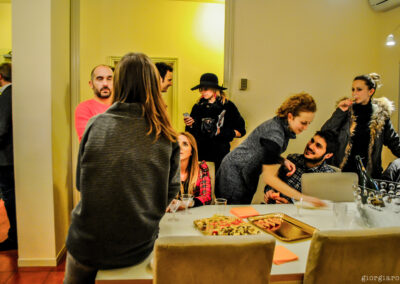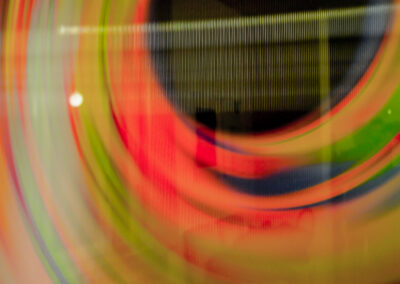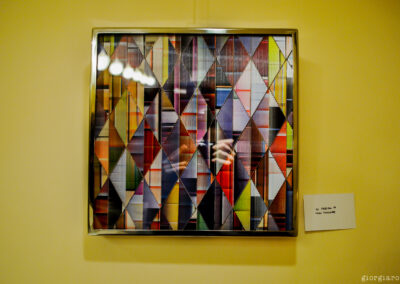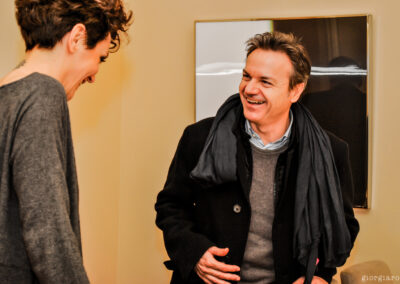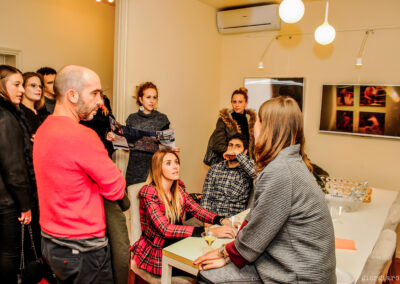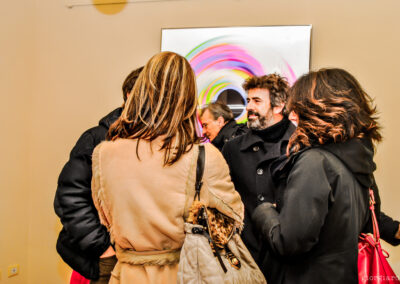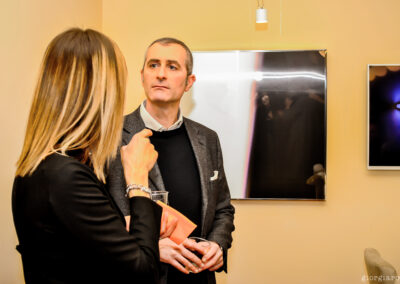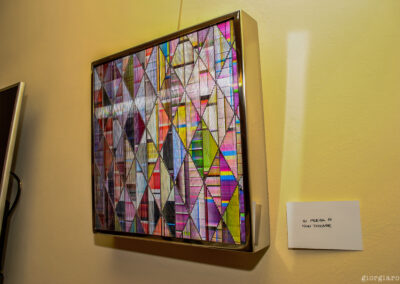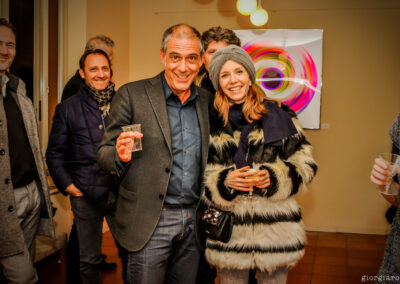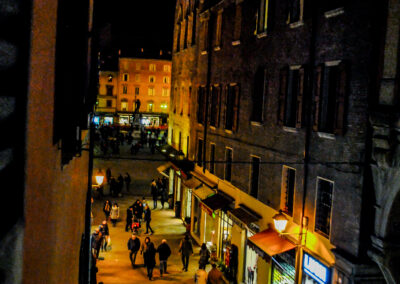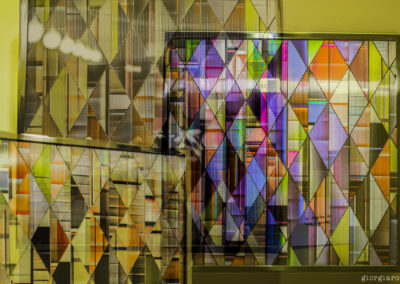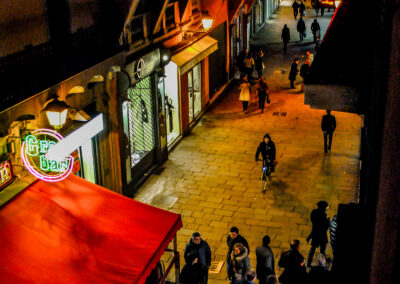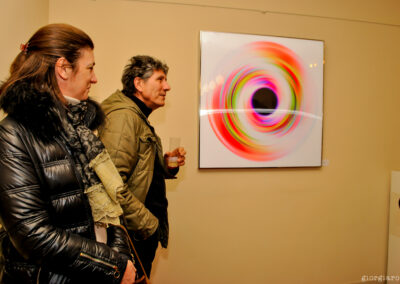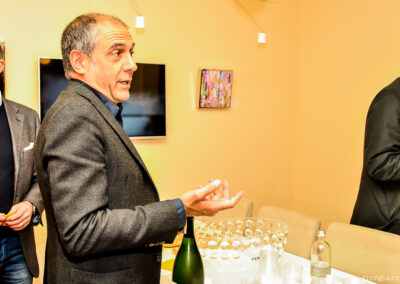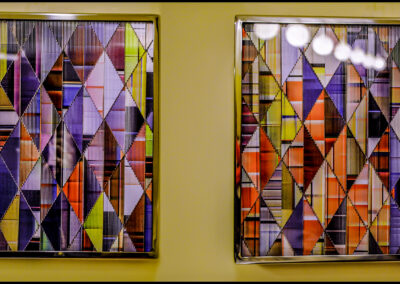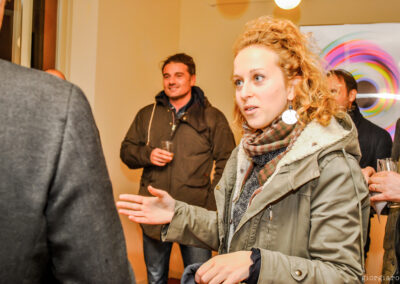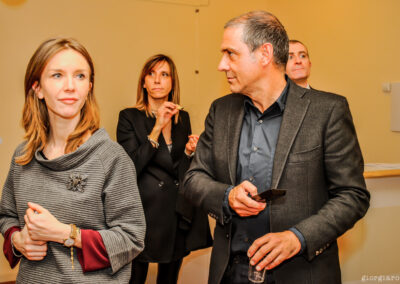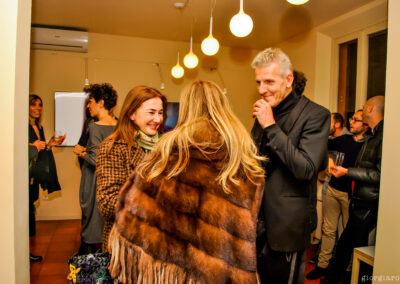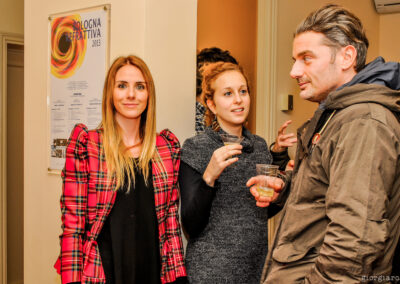2015
BEFORE AND BEHIND THE PUPIL
“nano-impressionismo cinetico”
UMBERTO CICERI
In mostra tre straordinarie opere di Umberto Ciceri, frutto di contrasti cromatici che generano nello sguardo dello spettatore un inevitabile senso di straniamento. L’artista, infatti, manipola i colori attraverso le lenti usandole come un’estensione del senso ordinario, una specie di nano-impressionismo, regalandoci una rappresentazione della realtà non piu’obiettiva ma arbitraria. Il paesaggio nel quale Ciceri opera è invisibile ad occhio nudo e ci appare come una astrazione, una astrazione non inventata ma proviente da un cambio di scala parossistico di una azione videoregistrata. La sostituzione e l’aggiunta di microconfigurazioni di colori complementari asaltano la ricezione finale con vibrazioni ed interferenze, come se l’impasto ottico ottenuto emanasse luce propria in forma ondulatoria. Il suo lavoro nasconde una regia, una sceneggiatura ed un montaggio di una vera e propria tessitura di fotogrammi, come un geologo immerge noi spettatori nella materia profonda dell’immagine, una forma imposta di miopia che libera l’occhio e ci costringe ad interpretare con il sistema nervoso.
Three extraordinary works by Umberto Ciceri, the result of color contrasts that generate an inevitable sense of alienation in the viewer’s eyes. The artist manipulates colors through the lenses, by using them as an extension of the ordinary sense, a sort of nano-impressionism, giving us a representation of reality that is no longer objective but arbitrary. The landscape where Ciceri operates is invisible to a naked eye and appears to us as an abstraction that is not invented but derives from a paroxysmal change of scale of a videotaped action. The substitution and addition of microconfigurations of complementary colors contrast the final reception with vibrations and interferences, as if the obtained optical mixture gave off its own light in wave form. His work hides a direction, a screenplay and a montage of a real pattern of frames: like a geologist, he immerses us spectators in the deep matter of the image, an imposed form of myopia that frees the eye and forces us to interpret with the nervous system.
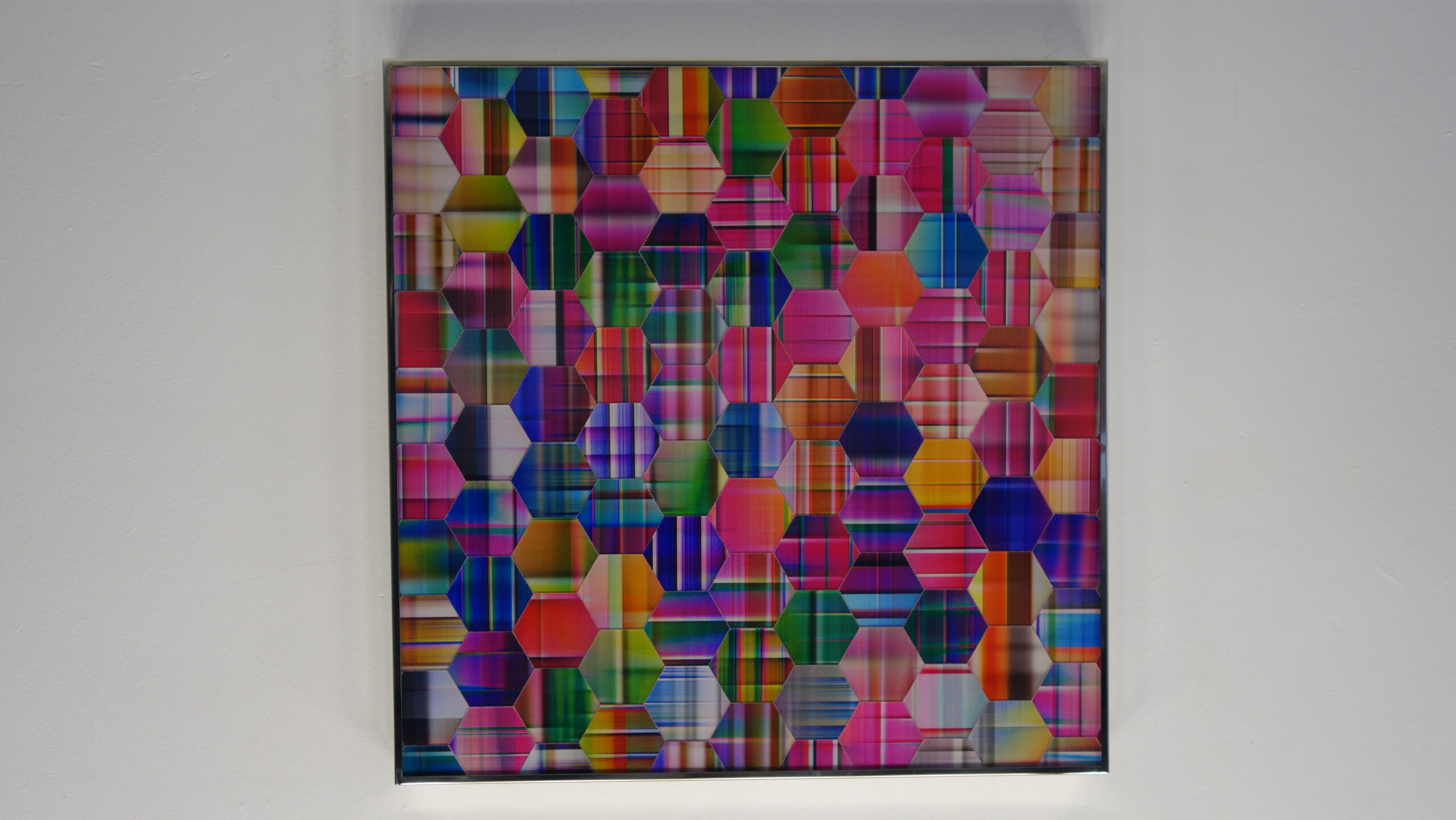
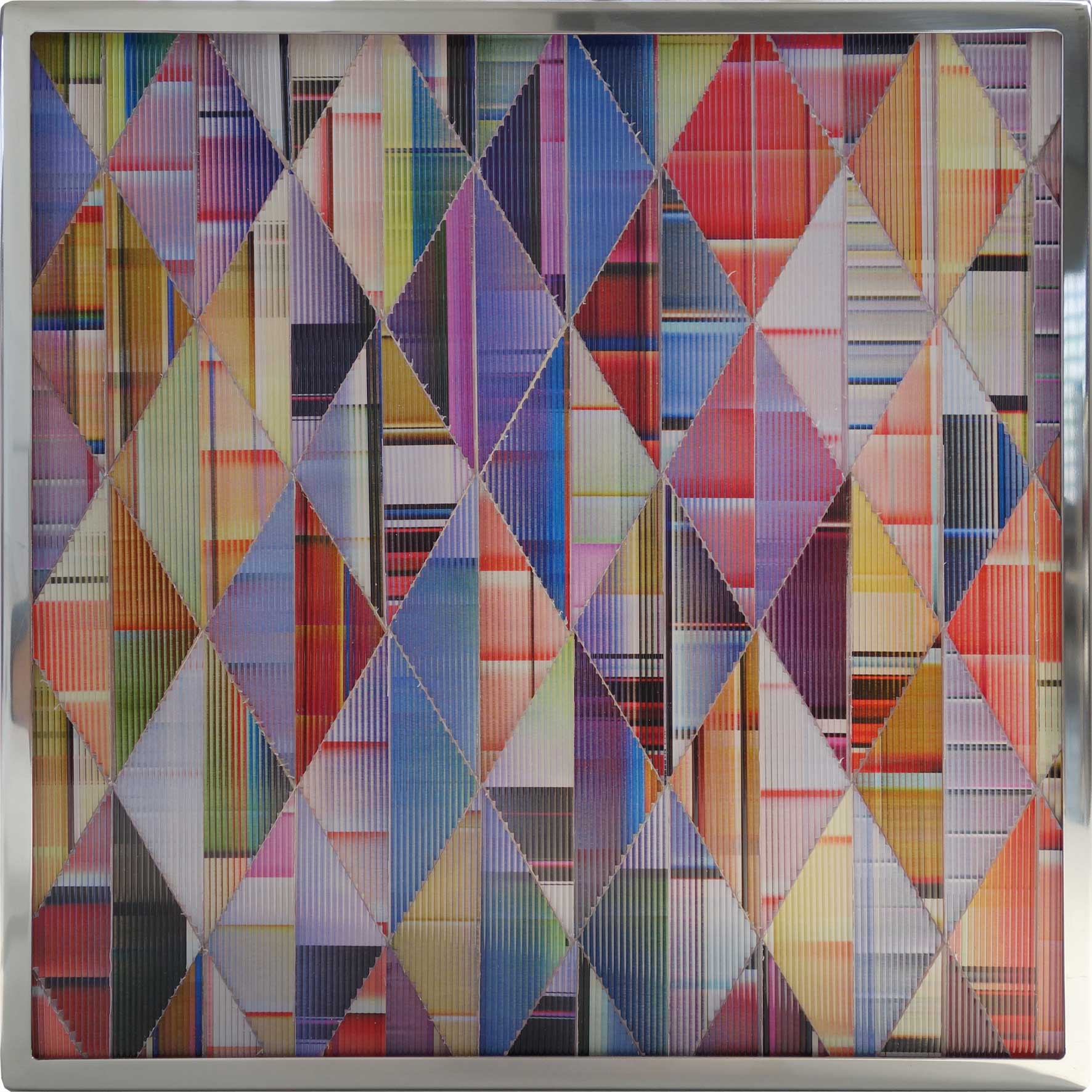
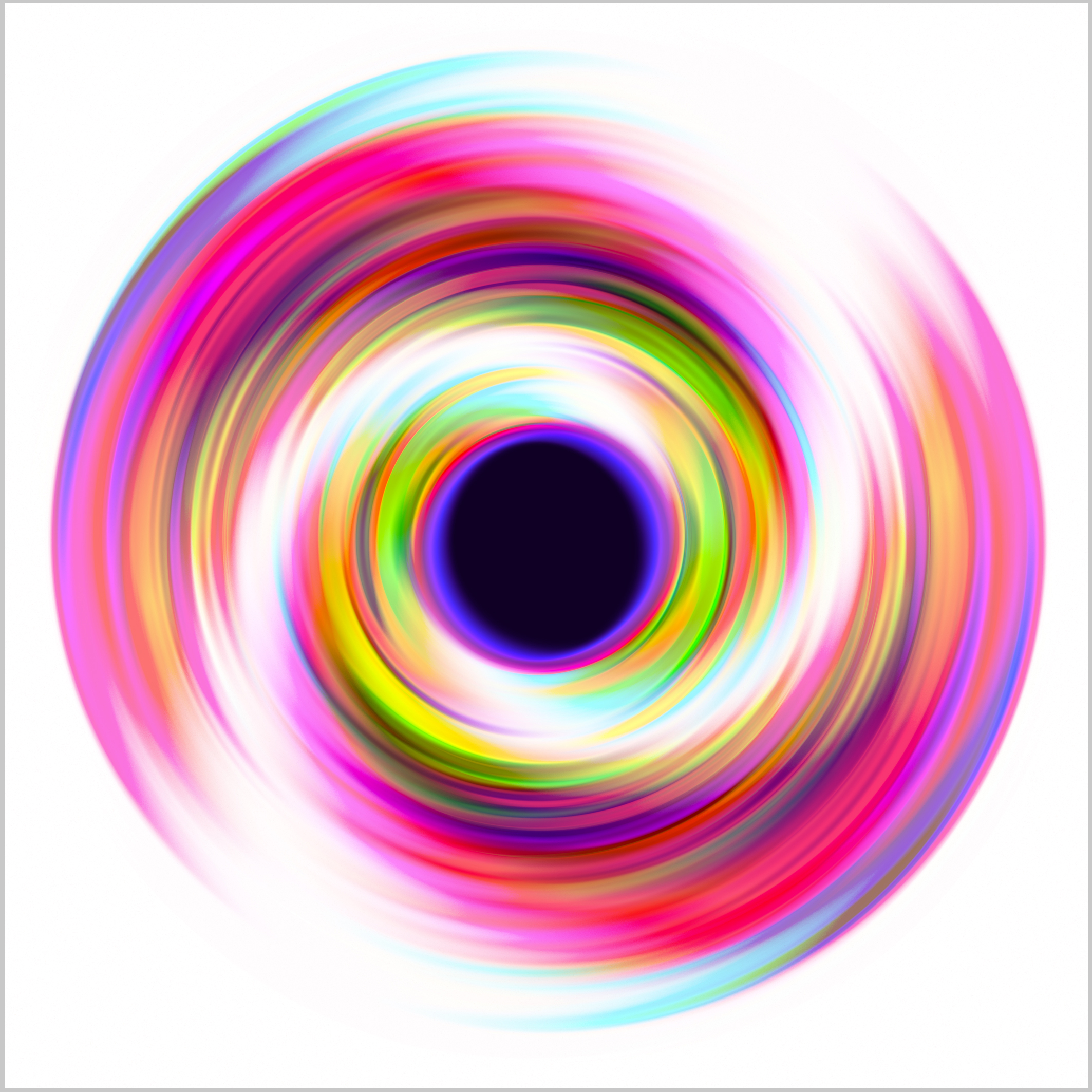
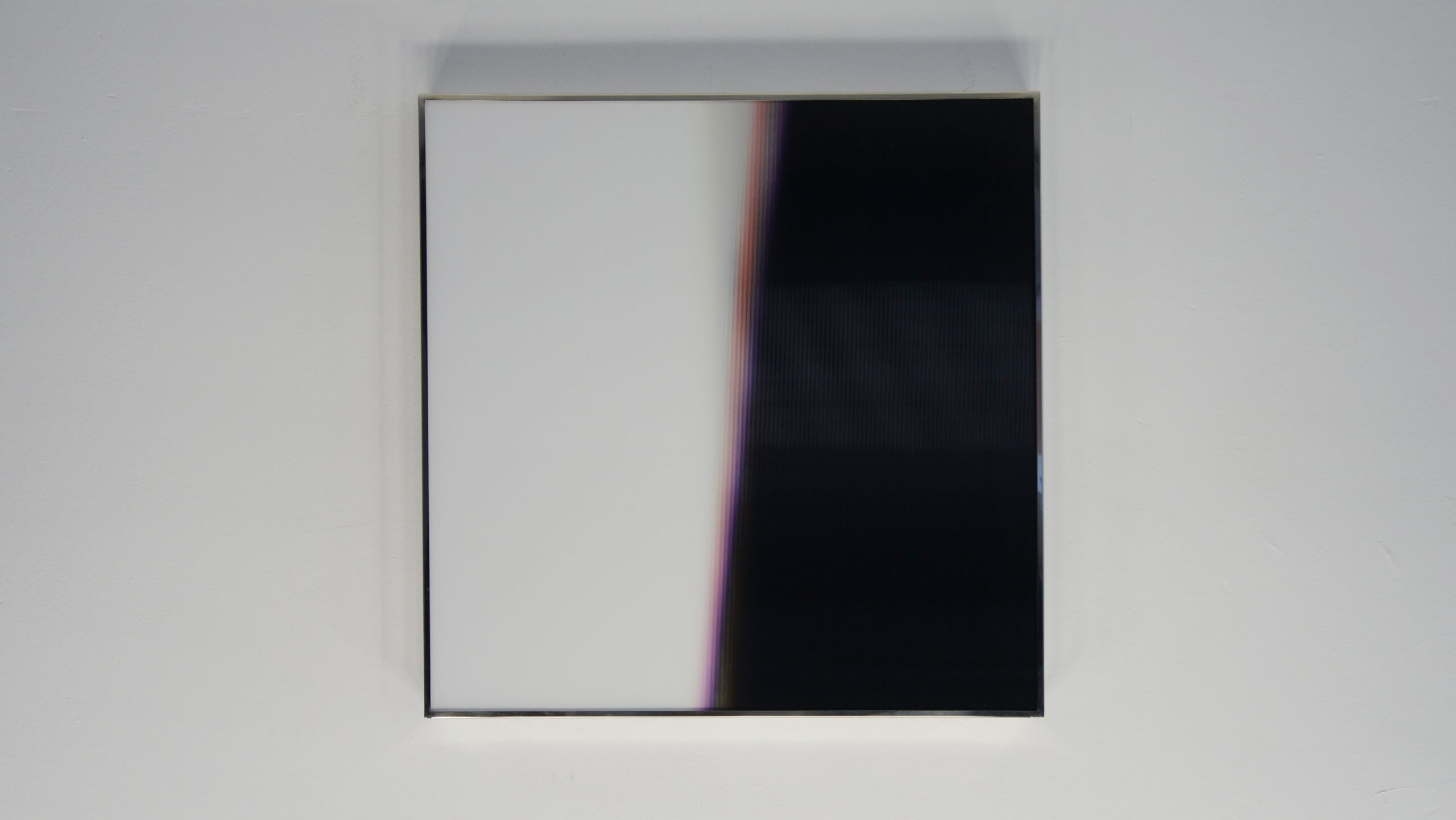
Il dietro le quinte del processo di ricerca
1- Il processo inizia sempre attraverso la videoregistrazione
di azioni realmente accadute nel tempo e nello spazio.
In esterno o in interno, l’artista fa girare i soggetti su loro stessi
con motori elettrici oppure gira lui attorno a loro.
I tempi di registrazione possono durare da giorni a pochi secondi,
l’importante è che tutto avvenga “intenzionalmente”.
2- Le azioni possono essere già preregistrate, l’artista
costruisce dei veri e propri set teatrali e le videoregistra.
Per lui ha sempre il medesmo valore di un azione dal vivo,
di uno spettacolo che sta accadendo davanti ai suoi occhi.
3- I fotogrammi vengono scelti secondo una regia, una sceneggiatura
e un montaggio, il risultato finale è solo immaginato.
4- lo sfocato libera l’effetto ondulatorio della luce
che supera le barriere della nostra insipienza
percettiva assuefatta da confine autoritario,
“non a fuoco” significa non autoritario.
La rappresentazione viene dissolta in qualcosa
che non si distingue ma si fonde sulla retina.
L’Hypertrait lascia il segno nei nostri neuroni,
senza necessariamente lasciare la traccia
mnesica della visione cosciente.
5- Il fuoco è protagonista, quel che pare fuori fuoco
ottico è in realtà il frutto di un lavoro di messa
a fuoco nanometrica, al limite del parossistico:
la messa a registro dell’invisibile con il visibile.
La personale tecnica della sfocatura di Ciceri è
il risultato di un esercizio certosino di
scomposizione e ricomposizione del fuoco
delle immagini nei loro pattern cromatici
elementari, richiedendo una grande esperienza
ed una pratica sapiente, quasi un pittore al lavoro
con i pigmenti della fotosintesi ottica.
6- l’artista tesse il risultato prodotto come fosse al telaio,
usando fili di fotogrammi al posto dei fili di seta,
poi stamperà “il tessuto ottico” su carte speciali
con una generazione di inchiostri ad altissima saturazione.
7- SIGNAC-TIME
Come un geologo, l’artista si immerge nella materia
profonda dell’immagine, lavorando su scala subliminale.
Il paesaggio nel quale Ciceri
opera è un luogo inevitabilmente astratto e invisibile
ad occhio nudo. Sostituisce ed aggiunge microconfigurazioni
di colori complementari capaci di esaltare la ricezione
finale con vibrazioni ed interferenze, come se l’impasto ottico
ottenuto emanasse luce propria in forma ondulatoria.
(In questo caso, i rossi del “soggetto” risulteranno potenziati
dall’inclusione di grandi quantitativi di verdi, mentre il buio
del fondo verrà contaminato da diverse cromie violacee,
acquistando vibrazione e maggiore profondità di campo)
8- Gli IMPASTI OTTICI sono sempre differenti,
è unica la combinazione ogni volta. Pezzi unici.
Le variazioni che producono l’unicità sono apparentemente
invisibili, troppo piccole da distinguere per l’occhio umano
ma sufficienti a provocare differenti sensazioni luminose
ed interferenze cangianti .
9- la luce esterna, penetrando all’interno delle lenti ottiche, interagisce
con l’immagine stampata in una continua riflessione, diffrazione
e diffusione di onde, innescando un fenomeno che l’artista ha
denominato SUPERSYNTHESIS :
le due leggi della visione, la sintesi additiva che governa la luce
e la sintesi sottrattiva che governa la materia, si vanno a sommare
per produrre nuovi colori che in realtà nel lavoro non esistono,
ed ogni osservatore processerà i propri.
10- le lenti ottiche vengono poste a registro
sul tessuto ottico stampato con una precisione nanometrica.
Questo passaggio può essere solo manuale,
i risultati “industrializzati” non sono minimamente
paragonabili.
11- Pollini di fiore, chitoni di coleotteri,
secrezioni di molluschi e minerali vanno a formare
la ricetta segreta dell’inchiostro col quale
l’autore timbra il proprio simbolo sul
retro di ogni lavoro.
12- il movimento è un illusione come lo è l’immobilità,
il processo ottico e cinetico dell’hypertrait si traduce
sia in un MOTO TRASLATORIO : il movimento del corpo
induce il movimento dell’immagine che a sua volta
induce il movimento del corpo, che in un
MOTO IMMERSIVO nelle profondità della percezione.
Il caso è quello che regola l’unicità dell’esperienza
dell’ Hypertrait, le rivoluzioni, la reiterazione
del ciclo, saranno sempre diversi per la capacità
che l’osservatore ha di dissolvere e risolvere
nuovamente il materiale presentato.
Behind-the-scenes view of the study process
1- The process always starts with filming
actions that really take place in space and time.
Whether outside or inside, the artist makes the subjects spin with
electric motors or he circles around them.
Recording times can last from days to a few seconds, but the important
thing is that everything takes place “intentionally”.
2- The actions may already be pre-recorded. The artist
builds actual theatre sets and films them.
For him this has the same value as live action or
a show that is taking place before his very eyes.
3- The frames are selected according to directing, script and editing. The final result is purely imagined.
4- Blurring releases the undulatory effect of the light
which overcomes the barriers of our perceptive ignorance that depend so much
on authoritarian boundaries.
“Not in focus” means non-authoritarian.
The depiction is broken down into something
that does not stand out but melts on the retina.
The Hypertrait leaves a mark on our neurons,
without necessarily leaving the
mnesic imprint of conscious vision.
5- Focus is the main feature. What appears to be optically out of focus
is in reality the result of
nanometric focus, bordering on paroxysmal:
recording what is invisible with what is visible.
Ciceri’s personal blurring technique is
the result of the painstaking practice of
breaking down the focus of the images and then putting it back together
in their elementary colour patterns,
requiring great experience
and expert technique. He is almost a painter working
with the pigments of optical photosynthesis.
6- The artist weaves the resulting creation as he were working with a loom,
using strands of frames in place of silk thread,
and then goes on to print the “optical fabric” on special kinds of paper
with a generation of exceptionally high saturation ink.
7- SIGNAC-TIME
Like a geologist, the artist immerses himself in the profound
material of the image, working on a subliminal scale.
The landscape in which Ciceri
operates is a place that’s inevitably abstract and invisible
to the naked eye. He replaces and adds micro-configurations
of complementary colours that manage to emphasise the final
reception with vibrations and interference, as if the optical mix
obtained were emanating its own light in undulating shapes.
(In this case, the reds of the “subject” are strengthened
by the inclusion of huge quantities of green, while the dark
of the background will be contaminated by various purple shades,
acquiring vibration and greater depth of field)
8- The OPTICAL MIXES are always different,
with a unique combination each time. Unique pieces.
The variations that produce the uniqueness are seemingly
invisible, too small for the human eye to pick up
yet large enough to create different luminous sensations
and prismatic interference.
9- Penetrating inside the optical lenses, the external light interacts
with the printed image in a continuous reflection, diffraction
and diffusion of waves, setting off a phenomenon that the artist has
named SUPERSYNTHESIS :
the two laws of vision, additive synthesis which governs the light
and subtractive synthesis which governs the material, combine to
produce new colours which don’t really exist in the work,
and each observer will process his or her own.
10- Optical lenses are set up
on optical fabric printed with nanometric precision.
This passage can only be manual, as
the “industrialized” results are not at all
comparable.
11- Flower pollen, chitons of moths,
mollusc secretions and minerals
create the secret formula of the ink with which
the author stamps his symbol on the back of
every piece of work.
12- Movement is an illusion as is immobility.
The optical and kinetic process of the hypertrait translates
into both TRANSLATORY MOTION : the movement of the body
induces the movement of the image which in its turn
induces the movement of the body, and an
IMMERSIVE MOTION in the depths of the perception.
Circumstance is what regulates the uniqueness of the
Hypertrait experience, the revolutions and the reiteration
of the cycle. They will always be different because of
the observer’s ability to break down and then piece together
the material presented.
.
